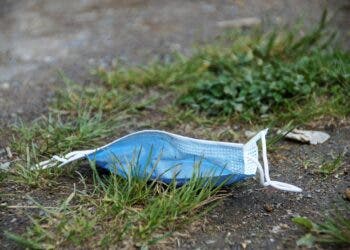Researchers from Taza Aya, a startup backed by the University of Michigan (UM), have developed an invisible air curtain to protect industrial workers from airborne pathogens that cause respiratory diseases.

A recent report from the US Bureau of Labor Statistics reveals that workplace-related diseases among industrial workers have risen from 37.7 cases per 10,000 workers in 2021 to 45.2 cases in 2022 (data for 2023 is not out yet). What’s more concerning is that this increase is majorly driven by a sharp rise in respiratory diseases among workers, which have spread at a rate of over 28 percent during the same period.
However, this shouldn’t come as a surprise. Even today, thousands of industrial workers such as miners, waste collectors, and people employed at poultry and meat processing facilities work in environments where they encounter millions of airborne pathogens daily. This puts them at high risk of developing breathing and other respiratory problems.
Although these workers are provided with masks and other protective gear at work, none of these measures guarantee 100 percent protection against airborne viruses and germs. This is where the proposed air curtain can make a huge difference. It works like an invisible face mask that provides protection against 99.8% of airborne pathogens, according to the Taza Aya team.
How does the invisible mask work?
An air curtain is a device used to create an invisible barrier of air across an opening, such as a doorway, to separate two different environments. It works by blowing a controlled stream of air vertically downward or horizontally across the opening. Air curtains are used in many places. For instance, cold storage units employ these devices at their entrances to maintain internal temperature, while many factories use them to block dust particles and reduce heat loss.
“Air curtains are common throughout the industry, used for things like keeping air from rushing out of climate-controlled spaces, deterring rodents and pests from getting into buildings, and on safety equipment like chemical hoods and biosafety cabinets. All these applications share a common feature: permitting entry of the things you want while excluding the things you don’t — without using a solid, physical barrier, the Taza Aya team said.
However, this is probably the first time an air curtain has been designed to work like an invisible face mask.
The proposed device looks similar to the helmet that construction workers wear, from the front. However, it comes connected to a lightweight backpack (weighing around 10 lbs) that works like an air filtration unit. The backpack uses special non-thermal plasma (NTP) modules that contain cold and partially ionized gases often used for water and food decontamination, and for sterilizing clinical equipment.
These modules pull in ambient air and purify it by neutralizing and eliminating pathogens. The treated air from the backpack then reaches the helmet through tubes. The front part of the helmet has nozzles that use the purified air to create an invisible air barrier. This air curtain serves two purposes. First, it prevents the entry of airborne pathogens into the breathing zone (approx. 10 inches around the face), and second, it provides the user with pure air to breathe.
“An array of nozzles that attaches to existing protective head gear dispenses an arc of air downward in front of the face, from ear to ear. Any potentially infectious airborne viruses present in your surroundings are entrained in and carried away by the air curtain,” the Taza Aya team notes.
The need for an invisible mask
Paper and fabric masks are cheap, easily available, and convenient to wear. So, why would we even need an invisible face mask? Well, they might work great for you, but to a factory worker, they pose several challenges. For instance, many technicians have to wear protective goggles while they work. A conventional mask causes fogging in the goggles, making it difficult for a worker to focus on their task.
“Ordinary masks also make it difficult for workers to communicate in noisy settings. In addition, the effectiveness of masks is reliant on a tight seal over the mouth and nose to ensure proper filtration, which can change minute to minute during a workday,” the researchers said.
The invisible mask from Taza Aya overcomes all these challenges. It doesn’t fog glasses, allows workers to communicate without compromising their safety, and ensures effective air filtration all the time.
“It’s virtually unheard of — our level of protection against airborne germs, especially when combined with the improved ergonomics it also provides,” Herek Clack, Taza Aya co-founder and an associate professor at UM, said.
The Taza Aya team is planning to launch this device in 2025.






